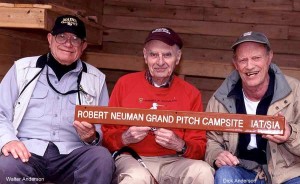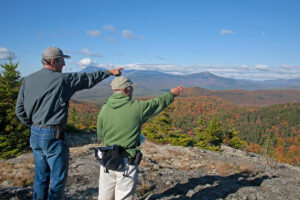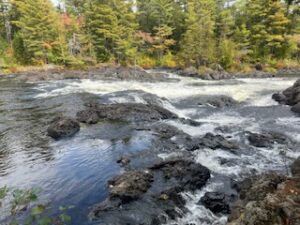
A dear friend of the IAT, Dr. Robert Neuman passed away at the age of 93 on May 24, 2013. Dr. Neuman was a scientist for the U.S. Geological Survey at the U.S. National Museum, Washington D.C. After his retirement in 1985 Dr. Neuman was an emeritus scientist of the U.S. Geological Survey and the Smithsonian Institution. He worked closely with the Maine Geological Survey for many years.
Bob worked for many years in northern Maine with forays into New Brunswick, Newfoundland / Labrador, Ireland, Scotland and Norway. In the early 60’s he was the right man in the right place at just the right time as his early geological mapping on and near the International Appalachian Trail (IAT) along the East Branch of the Penobscot River confirmed the then newly proposed theory of “continental drift”, now known as plate tectonics. Bob recognized that the marine brachiopod fossils in the nearby Shin Pond volcanic ash were European in nature and quite distinct and separate from their North American shore-line hugging contemporaries far to the west, and brought reality to the postulated seaway (Iapetus) that lay between them. There was then too much deep water that prevented Bob’s ‘Celtic fauna’ from swimming across to mingle and interbreed with the North American ones, and vice versa. Bob was the first to perceive this, and his name will forever be linked with the emerging recognition of the 450 million year old Ordovician Iapetus seaway. He was the discoverer of the ‘Penobscottian orogeny’, the early stages of Appalachian mountain building, which occurred with the closing of Iapetus seaway and the subsequent collisions of Europe, Africa and North America. His research is recognized by a broad spectrum of the scientific community and is published in numerous national and international publications.
In 2007 a campsite on the International Appalachian Trail located near Mount Kathadin was named in his honor. Dr. Neuman will be surely missed by many.



